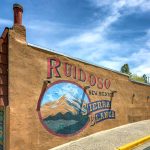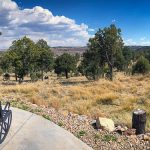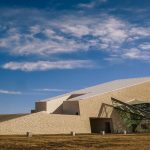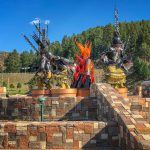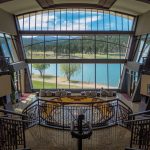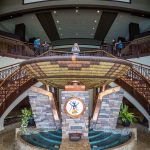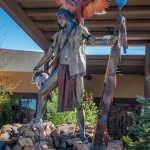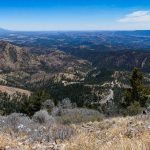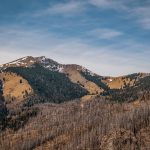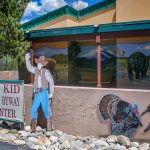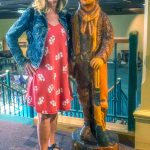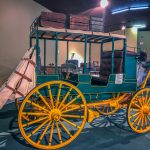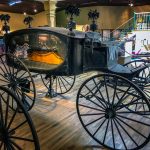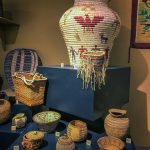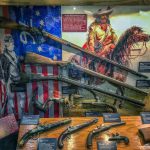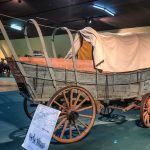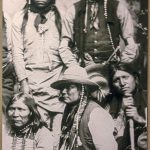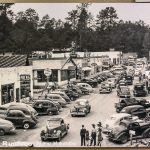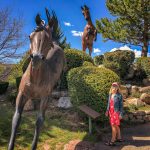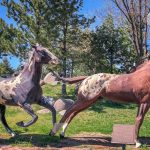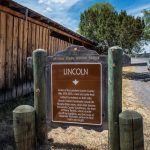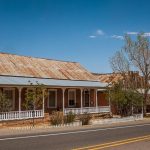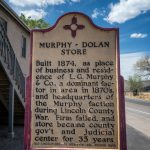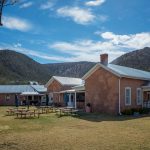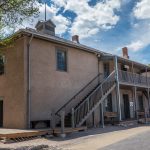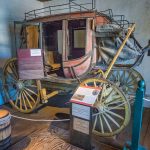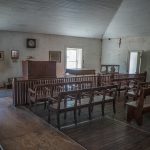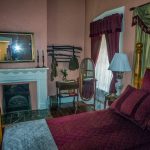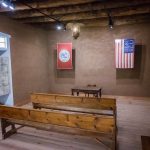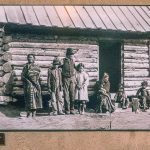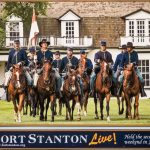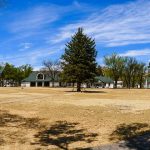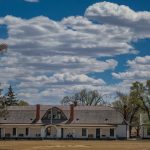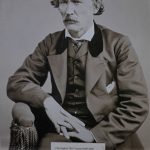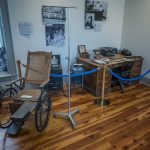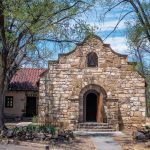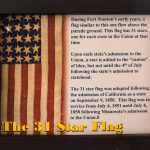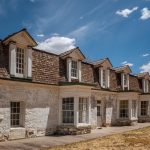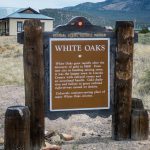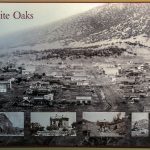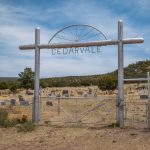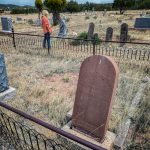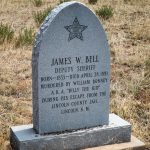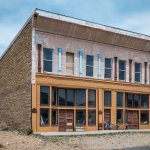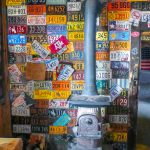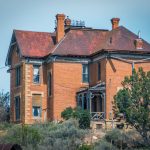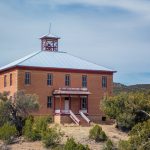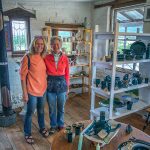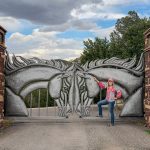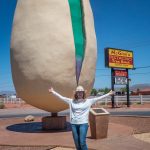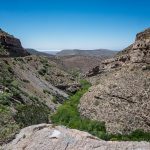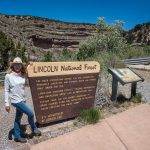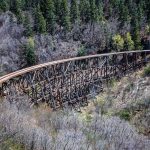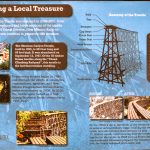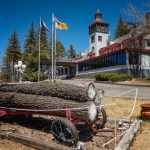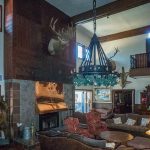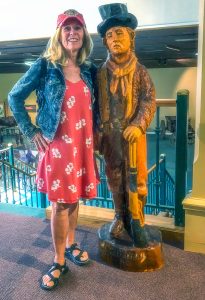
We arrived in Ruidoso, NM on April 25 staying at the Ruidoso Motorcoach Ranch, the only Class A luxury RV resort in New Mexico.There is a lot to see and do here, besides the Ruidoso Downs Race Track, which has been the regions premier attraction since the 1940s. Labor Day attendance to the All American Futurity was nearly 25,000 fans. We weren’t here for the races though, but we did go to the Inn of the Mountain Gods Resort & Casino located in the mountains just above Ruidoso, beside the pristine Lake Mescalero. A wonderful place to come and relax and enjoy a cocktail on the expansive deck looking out on Sierra Blanca Mountain range. We visited the Hubbard Museum of the American West, a Smithsonian Affiliate. The Museum’s 10,000 piece collection includes: wagons, carriages, saddles, firearms, and many Native American artifacts. The life-size horse sculptures outside the Museum is called “Free Spirits at Noisy Water” by Dave Mc Gary, and is a very impressive work of art. The small mountain village of Ruidoso, at 6,920 feet, also has a ski resort called Ski Apache, where we drove to see the vistas and check out the lodge. This was a great stop and we would definitely find our way back here again. Click on thumbnail to view image
Lincoln
Another day we drove to Historic Lincoln NM, 35 miles northeast of Ruidoso. In 1859 it was a community of eight families and single men, and was called La Placita. It grew steadily and in 1869 was renamed for President Lincoln, and declared the seat of Lincoln County. Lincoln is considered to be the most authentic old west town in the US, and is famous for the Lincoln County War from 1878-1881. It is where Billy the Kid, William H Bonney, who shot down Sheriff Brady, was convicted and sentenced to hang on May 13, 1881. He made his famous escape from the courthouse, killing his two guards, on April 28, 1881. But Billy’s life came to a tragic end on July 14, 1881 when he stumbled upon Sheriff Pat Garrett in a darkened bedroom. Shot through the heart, Billy was killed at the young age of 21 and laid to rest in the Old Fort Cemetery in Fort Sumner. We walked in the footsteps of Billy the Kid, saw his jail cell, a gun shot in the wall, and we visited six museums, shops and ate lunch in one of the old restaurants. Lincoln has kept the old west character as it looked during the Lincoln County War. Click on thumbnail to view image
Fort Stanton
After leaving Lincoln we stopped at Historic Fort Stanton, one of the most intact 19th century military forts in the country. The Fort Stanton Museum features excellent exhibits and an orientation video, bringing to life the rich history and heritage of Fort Stanton. The Fort was established in 1855 and operated as a military fortification through 1896. In 1899, Fort Stanton was transferred to the Marine Hospital Service and became the only federal hospital for treating sailors suffering from tuberculosis patients until 1953. Another unusual chapter in Fort Stanton’s history is its role as an internment camp for a crew of 410 German sailors. They were the crew of the SS Columbus, a German luxury liner, who were picked up by the Americans in 1941and interned at Fort Stanton for the duration of WW II. We did a self-guided tour of the barracks built in 1855, the New hospital, built in 1936, the Catholic Church, built in 1913, and the Officer’s Quarters. Click on thumbnail to view image
White Oaks
Our last day in Ruidoso we drove to the ghost town of White Oaks. In 1879, gold was discovered in the hills near White Oaks, and the boom began. White Oaks’ gold mines were the deepest, dry, free-milling mines in the US. Tthe Old Abe mine reached 1,350 feet before there was any water seepage. As the mines petered out by 1900, the railway changed its route and that was the end of White Oaks boomtown. At its height, the town had as many as 2,500 residents, today, only about 50 residents live in this quiet, peaceful area. Some of the old houses are still privately owned, the Gumm House and the Hoyle House, built in 1893. The School House Museum, a four-room school house, much of its structure is exactly as it was when it was built in 1895, it closed as a school in 1947. We stopped in at the only pub in town called “No Scum Allowed Saloon” for a beer and to talk with the female owner. We drove out of town to see the White Oaks Pottery, handmade by Ivy Heymann, who lives off the grid in this small house making her pottery. It was interesting to talk to her and hear her life’s story. Click on thumbnail to view image
Cloudcroft
We went for another day trip to visit Cloudcroft, NM, with an elevation of 8,600 feet. Thus the name Cloudcroft meaning “a pasture for the clouds”. It was named by Fodor’s as the #3 “Most Overlooked and Underrated Destination Spot”. We visited the Lodge at Cloudcroft built in 1911, where we were going to have lunch but it was too early. It is a destination resort for golf, spa and relaxation, towering 9,000 feet above sea level. The rail line arrived in Cloudcroft in early 1900, and the train depot was finished the same year, to harvest the forests but also to attract visitors. As the automobile grew in popularity the rail line began to lose money and the Passenger service ended in 1938, the last train in 1947. Even though tourism has grown in Cloudcroft the town’s population has not grown, remaining at about 700 to 800 residents. We stopped at the overlook of the Mexican railroad Trestle Bridge, to read the beautifully done signs with lots of information and excellent old-time photos of the lumber/tourist railroad which ran up steep grades, around very sharp curves, and across many trestles, to Cloudcroft from Alamogordo from the late 1800’s until the 1940’s. The view of the remaining trestle will take your breath away, great for rail buffs, like Bob. Click on thumbnail to view image


